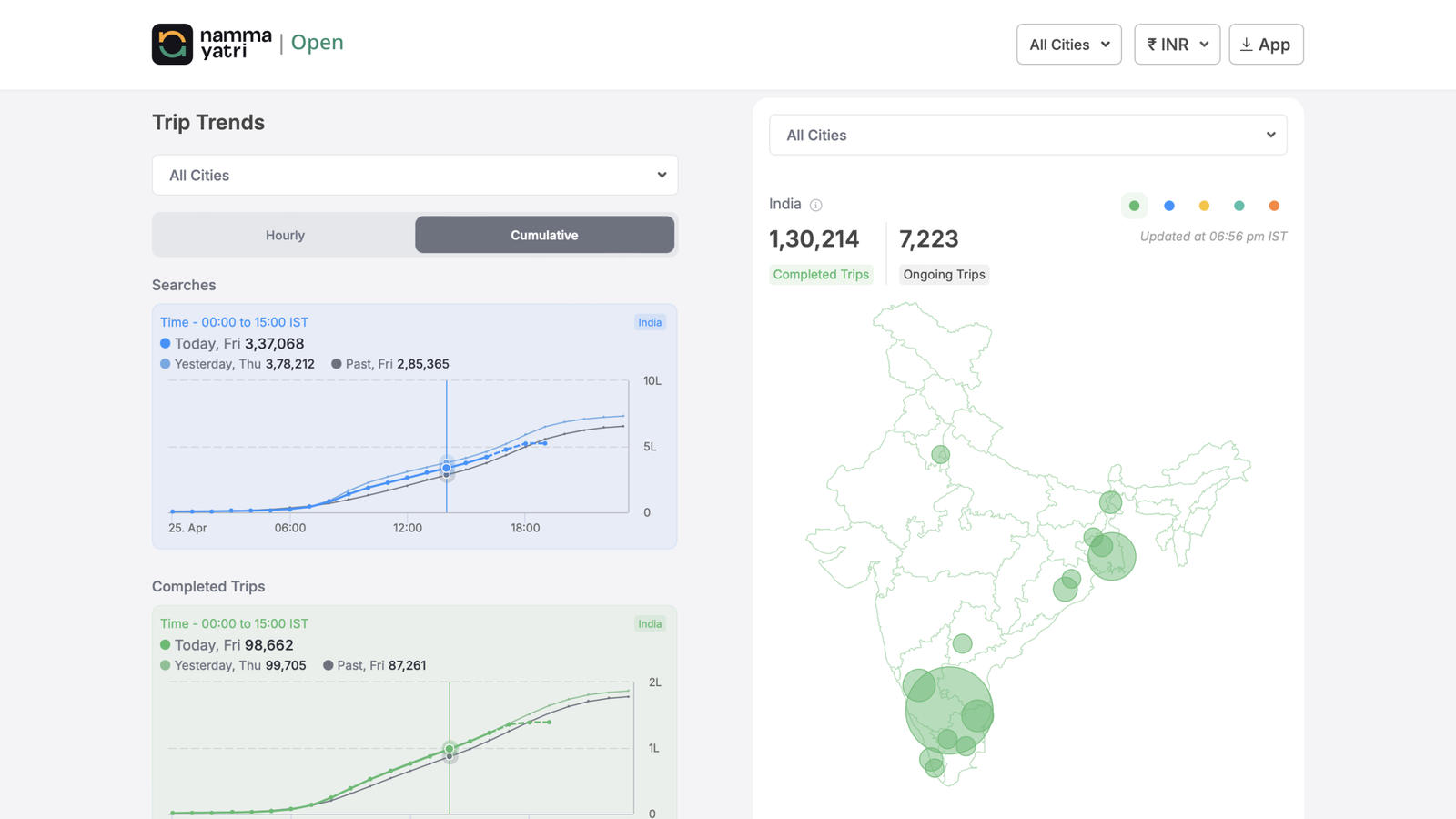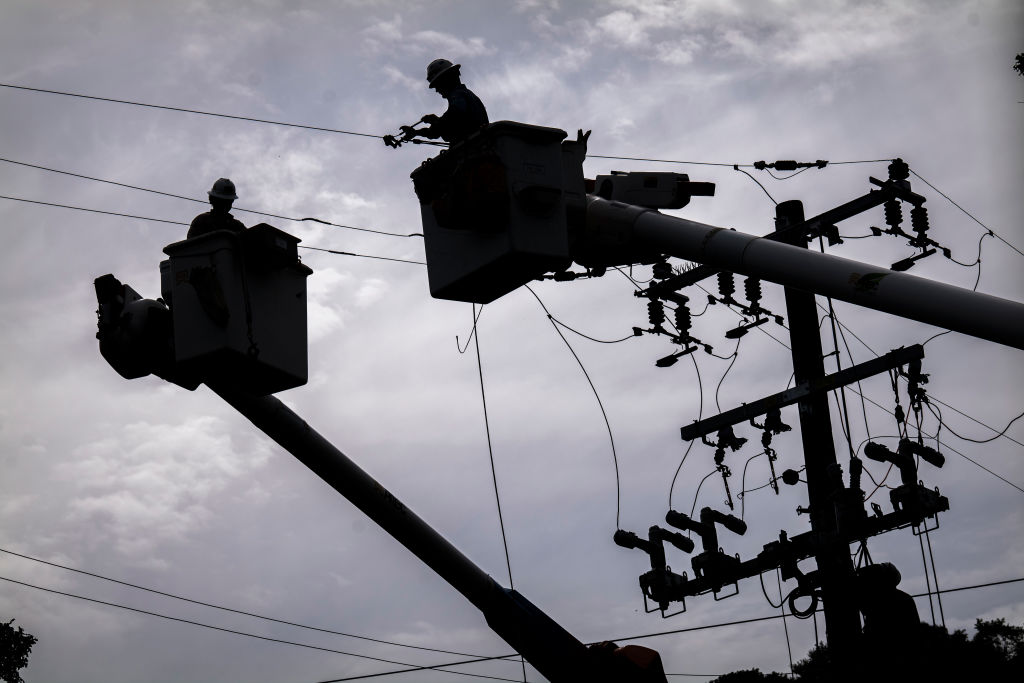
Help Us Report on How the Department of Education Is Handling Civil Rights Cases
May 2, 2025
Is Anthony Weiner Ready to Go Another Round?
May 2, 2025A 3-year-old homegrown startup has upended India’s ride-hailing sector.
Namma Yatri, launched in 2022 as an auto-rickshaw aggregator, has changed how drivers earn from ride-hailing platforms. The app, developed in consultation with a drivers’ union in Bengaluru, discarded the dominant commission-based model and pioneered a subscription-based system where drivers pay the platform a nominal fee and get to keep the entire fare charged from customers.
The app, currently available in more than 15 Indian cities, facilitates nearly 190,000 cab and rickshaw rides a day. It has helped 638,000 drivers earn a total of more than $175 million since its launch, according to its website.
Its success has forced its more established rivals — OlaOlaOla is a transportation company, founded in 2010 by Bhavish Agarwal, which offers ride-hailing services and sells electric scooters.READ MORE, Rapido, and most recently, Uber — to tweak their business models and offer subscriptions. The Indian government, too, is looking to introduce a ride-hailing app that will transfer profits directly to drivers. Namma Yatri is now eyeing an overseas expansion, even as it navigates new challenges back home, including diminishing driver trust and increased competition.
“Namma Yatri has been quite central to this shift happening all across,” Sarayu Natarajan, founder of Aapti Institute, a public research organization focused on technology and society, told Rest of World, referring to the industrywide change in payment models.
Though Namma Yatri has a much smaller market share than its rivals, it has changed the sector’s momentum, Saurav Kumar Chachan, associate partner with Redseer, a research and consulting firm focused on startups, told Rest of World. “Drivers would also have seen it as a better alternative and platforms would have had to align with the market direction.”
Rapido, Ola, and Uber did not respond to Rest of World’s request for comment.
Namma Yatri was the result of a collaboration between multiple entities: a payments startup, a nonprofit, and a local drivers’ union.
The app was developed by a SoftBank-backed fintech firm, Juspay, in partnership with the Foundation for Interoperability in Digital Economy, (FIDE), a nonprofit focused on building digital infrastructure using open protocols. Namma Yatri’s founding team consulted with the Auto Rickshaw Drivers’ Union (ARDU) in Bengaluru to ensure the app could respond to challenges within existing ride-hailing models.
To better understand these gaps, senior Juspay executives drove auto-rickshaws themselves, M.S. Shanmugavel, then a Juspay executive and part of Namma Yatri’s founding team, told Rest of World. Drivers were happy to provide inputs and publicize Namma Yatri as it addressed longstanding issues of high commissions charged by apps like Uber and Ola. “We felt it was our app and customers also liked it and told others about it,” Rudramurthy, ARDU’s general secretary, told Rest of World.
When Namma Yatri launched in November 2022, it was free for drivers, and a few thousand were already on the app, Rudramurthy said.
The timing was opportune: The state government of Karnataka — where Bengaluru is located — was threatening to ban Uber, Ola, and Rapido for overcharging customers.
In mid-2023, Namma Yatri rolled out a subscription fee model that varied across regions. In most states, auto-rickshaw drivers pay 25 rupees (29 cents) a day for unlimited rides, or 3.5 rupees (4 cents) per ride for the first 10 trips, after which there is no charge.
Namma Yatri also uses an open data approach — it is the only ride-hailing app in India that makes key driver and ride metrics publicly accessible.
Later in 2023, Juspay carved Namma Yatri into a separate company called Moving Tech Innovations. Shanmugavel was appointed its chief operating officer; Magizhan Selvan, also a former Juspay executive and part of Namma Yatri’s founding team, took over as chief executive officer. In 2024, Moving Tech Innovations raised $11 million from Google and venture capital firms Blume Ventures and Antler.
“We liked how they were building it and working to solve mobility at scale. It can scale massively without much capital outlay,” Karthik Reddy, Blume’s co-founder, told Rest of World. Unlike its larger rivals, Namma Yatri has not spent heavily on marketing, customer discounts, and driver incentives.
The model of allowing customers to pay drivers directly offers a tax incentive for ride-hailing apps, Sarayu said. Namma Yatri is exempted from charging its customers a Goods and Services Tax since it only connects drivers and passengers, without facilitating payments. Tax authorities have, however, passed conflicting rulings on this issue for other apps that switched to subscriptions for drivers.
Since Namma Yatri’s open-source technology limits its competitive edge, its growth hinges on distribution and customer experience, Susmit Patodia, associate partner at Antler India, told Rest of World.
Customers who spoke to Rest of World offered mixed reviews. Bobby Thomas, who sold his private vehicle last year, prefers Rapido and Namma Yatri because they seem transparent and driver- friendly, although availability during peak hours has become a challenge. Aside from certain areas, where Namma Yatri is more dependable, “my default option is now Uber because I feel the user experience is better,” said Disha Rawal, a Bengaluru resident.
Rest of World spoke to nearly a dozen drivers, who no longer see a clear distinction between various ride-hailing apps. Most use at least two. Many Bengaluru drivers are disenchanted with Namma Yatri because they believe the company, which claims data transparency, is opaque about its earnings, Satya Arikutharam, an independent mobility expert who helped establish the connection between Namma Yatri’s founding team and ARDU, told Rest of World.
While drivers have fewer complaints against Namma Yatri compared to other platforms, they are wary of its subscription fee, M. Manjunath, president of the Adarsha Auto and Taxi Drivers’ Union in Bengaluru, told Rest of World. “When they started, they said no fee. What if they increase this fee later?” he said.
Namma Yatri is yet to break even. Between November 2023 and March 2024 — the latest period for which data is available — it reported a net loss of 3.3 crore rupees ($387,000) on a revenue of 2.2 crore rupees ($258,000), according to research firm Tracxn. The platform is turning a profit per ride in three of the five states where it operates, Shanmugavel said.
We were prepared for a zero-commission model from day one.
The company has international ambitions, and there is a lot of inbound interest in Namma Yatri’s technology from developed and emerging economies across the world, said Shanmugavel. He declined to reveal specifics.
The startup was the first ride-hailing platform to join the government-run effort to democratize online commerce, the Open Network for Digital Commerce, which also operates on the protocol developed by FIDE. Namma Yatri is currently developing an app for multimodal transport with the Tamil Nadu state government. The company has also launched a programme to onboard more women as auto-rickshaw drivers — a rarity in the male-dominated profession.
“I tried a lot of jobs after I lost my husband, including working as domestic help, but I prefer driving,” Pushpalatha, a single mother from Bengaluru, told Rest of World. She earns 30,000 rupees ($349) every month from training other women and 500 rupees ($6) from daily rides.
While Namma Yatri’s unique offering helped its initial adoption in India, it will now go head-to-head with well-funded rivals that have replicated its model and have wider reach. Every platform “will be fighting for the same pool of drivers,” and the one with the most vehicles will have the best chance for success, Chachan said.
Namma Yatri’s open-source model, community-first approach, and public-private collaborations will drive its growth, said Shanmugavel. “We were prepared for a zero-commission model from day one,” he said. “For the others, it’s a strategy limited to certain categories and we don’t know how long for.”
#Indian #company #forcing #Uber #change #business #model
Thanks to the Team @ Rest of World – Source link & Great Job Indulekha Aravind


















